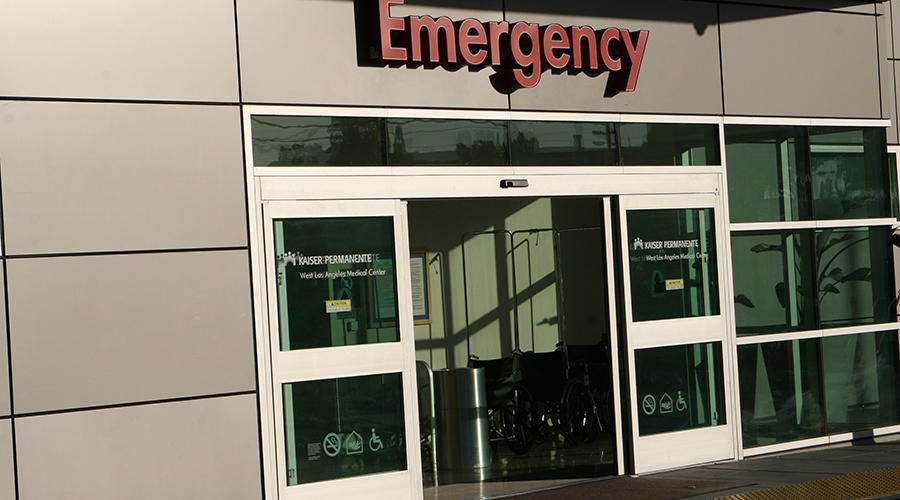Access Control Trends in Facility Security: What Managers Need to Know
While many facilities share common concerns, managers must prepare to adjust to the specific needs of owners and occupants.
By Howard Riell, Contributing Writer
The way maintenance and engineering managers handle access control and physical security in institutional and commercial facilities is undergoing significant changes.
Managers responsible for securing their facilities have to sort through a growing range of new technology offerings. While many managers are comfortable with their tried-and-true products, more managers are realizing the benefits of advanced security and access control solutions.
Security variables
Every facility has its own vulnerability areas, though most facilities share common security challenges. Areas susceptible to vulnerabilities in most facilities include the perimeter, building access points, critical equipment and tools, the physical plant and infrastructure, hosting and technology access points and storage areas.
Many facilities also are regularly managing the movements of multiple outside contractors, vendors and guests, creating a need for flexible access management that can be granted remotely without sacrificing security.
“Amid ever-changing technology come ever-changing risks,” says John Bartucci, vice president of connected products with The Master Lock Co. “Today’s security managers are tasked with juggling countless variables to ensure their operations are equipped with the proper level of protection. Challenges run a wide gamut and often require solutions spanning video surveillance, cyber security, fire protection, intrusion detection, access control and more.”
Despite advances in technology, managers can overlook hidden gaps and areas of vulnerability, making it more important than ever for managers to be proactive in assessing potential gaps and implementing end-to-end access control solutions to mitigate them.
Door security remains paramount.
“Whether your facility operates with traditional mechanical security or electronic-enabled devices, door hardware arguably plays the most significant role in access-control management,” Bartucci says. “It only takes one door that doesn’t lock, unlock or detect entry properly to make a once airtight security system now vulnerable to unauthorized users. Door hardware is often the first line of defense for facilities, acting as an operational physical barrier or controlled access point.”
Doors are among the most used components in any facility, which means reliable, flexible and effective access management is a fundamental part of business operations. Regular inspections, testing and maintenance can help managers avoid unexpected downtime and costly service calls by identifying faulty hardware or access issues before they potentially become irreparable. Diligent inspection and maintenance protocols are especially important in healthcare and school environments, where faulty access points can put occupants in danger.
Consistency is essential when it comes to mechanical door lock maintenance. Technicians should first take inventory of each door within their facilities and then identify an adequate inspection schedule for the hardware “which will largely be based on the door’s level of use and the required security level,” Bartucci says.
Adhering to this schedule ensures that managers are not reliant on occupants to report issues and that facility security remains uncompromised.
“By contrast, the beauty of implementing an electronic access-management system is that many electronic-enabled locks will indicate if there’s a performance issue or a door that was not secured properly via a smartphone app or software platform," Bartucci says. “This is just one way that transitioning from mechanical to electric security can save businesses both time and money in the long term.”
In determining which supplier to use, managers need to consider product portfolios and customer service.
“Security managers should enlist the support of suppliers who not only offer dependable door hardware, padlocks and other security products but who will also work closely with you to develop a security system that’s optimized for your facility,” says Bartucci, who adds that it might be tempting to simply select suppliers that provide the lowest quotes or fastest installation. “We see this most frequently with small businesses, whose facility may have as few as one or two doors that opt for mechanical door hardware simply because they think electronic-enabled devices are out of budget.”
In reality, there are highly rated electronic-enabled products for even the smallest facilities that are not cost-prohibitive. Investing in these more flexible systems early also supports the business’ future growth and makes expanding operations that much easier in the long term.
“Access management remains a work in progress for facilities everywhere, but investing in quality door hardware is a key first step,” Bartucci says.
Door hardware that connects with scalable electronic access management solutions “has proven to be most effective in eliminating these security gaps and mitigating risk in potentially vulnerable areas,” Bartucci says. “At the end of the day, it’s essential to select suppliers that you know you can trust to protect your facility and those in it.”
Maximizing access control
A facility’s access control system is among the most important building systems, says Colin DePree, head of sales strategy, North America with SALTO Systems Inc.
“At its most basic, access control simply means selectively allowing or restricting access to your building, or to specific areas within it,” he says. “But modern access control systems are, in fact, highly sophisticated and complex platforms that include hardware, software, services and integrations with other building systems. They are critical for protecting property and assets and keeping people safe and secure where they live, learn, work and visit.”
DePree says access control should not be an opportunity to benefit from innovation. Leveraging modern access control technology offers organizations the chance to improve business processes, identify efficiencies and optimize operations and unlock potential strategic value.
“Access control is no longer purely about control," DePree says. “It’s now about enabling access to an experience.”
Modern access-control hardware includes everything from electronic locks to biometric readers and even facial-recognition scanners. With the advent of various software as a service (SaaS) options, which allow users to connect to and use cloud-based apps over the internet, and cloud-based solutions, access credentials can be managed from anywhere and enabled on smartphones for touchless access.
Modern access control solutions grant managers access to information about all building users who have entered the building, where they went and how long they stayed.
“Facility managers that are currently not deploying electronic locking devices should consider the fact that access-control systems are much more secure than traditional mechanical locks,” DePree says.
Electronic locks have audit capabilities and provide secure credentialing that can eliminate mechanical key-cloning efforts.
When considering mechanical lock options, DePree recommends that managers ask three fundamental questions:
- What are the essential requirements of an access-control solution for this facility?
- What are the new technologies in access control?
- How can integration to extend the capabilities of the facility’s security program be leveraged?
“It’s obvious to say, but not all buildings are the same,” DePree says. “Engineers and facility managers must understand the unique needs and requirements of not just the facilities themselves but the businesses and people using the spaces. They must invest time and resources in understanding the full range of use cases for their facility.”
With this knowledge, managers can consider working with manufacturers that offer products that best accommodate their needs.
Another important consideration for managers is integrating existing security systems or infrastructure with video- or visitor-management systems, for example. Managers need to ensure that their supplier has a track record of successfully integrating with third-party platforms and products.
For electronic access control systems, managers should implement a maintenance program that includes regularly checking the mechanical and electronic functions of door hardware. Failure to do this with a scheduled program can cause unnecessary downtime and create increased safety issues at those openings.
Door hardware trends continue to focus on creating a minimalist design at each opening.
“Traditional access-control hardware would use multiple devices that were located around the frame of the opening and include bulky hardware on the door,” DePree says. “These designs usually required complex wiring schematics and low-voltage power to operate.”
Current locking systems involve integrating as many features as possible into the individual lockset and installing one battery-powered unit on the door.
“We will see this approach continue in the coming years predicts, and the single lockset intelligence will continue to evolve,” DePree says.
Howard Riell is a freelance writer from Henderson, Nevada.
Related Topics:












